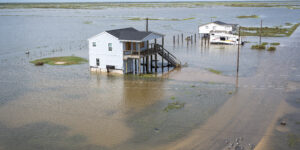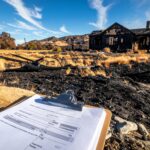Over 25 years leading RMS, and now even more so with my new colleagues at Archipelago, I’ve developed an affinity for the built environment: the hazards and risks of these assets, the imperatives for resiliency, the value of insurance when it’s efficient, and the pain that occurs when it’s not.
Large owners of real assets, whether investors in commercial real estate or corporations with sizable portfolios, are experiencing escalations in their cost of risk. Their premiums are rising, driven by the insurance industry’s response to both catastrophic and attritional losses, and increasing climate-driven volatility is now loaded into the system for years to come. As a result of these trends, many owner-managers are retaining more risk, investing in their own resiliency and taking proactive measures as responsible stewards of their assets. And key stakeholders within these organizations are demanding that “there has got to be a better way” when it comes to accessing insurance that more cost-effectively provides the coverage and solutions that matter.
Transformational change is rarely transactional; it is progressive and cumulative, and tipping points are achieved when a critical mass of pain and opportunity, resolve and capability all together form a crucible for action. In my experience, too much innovation in the risk and insurance market are safe bets, “local optimizations” to make incremental improvements to existing ways of doing business.
Yet in 2021, we will be approaching a convergence of three mutually reinforcing and systematic innovations across the property, risk and insurance ecosystem that will unlock new opportunities across the value chain:
- New platforms are emerging to connect owners, brokers and insurers of large commercial risks in unprecedented ways, creating opportunities not only for significant efficiencies that can be reinvested into better solutions but also for new “models” for engagement and value creation.
- Technology and data science are maturing, and both owners and insurers of large commercial risks are digitizing. The integrations of these data assets are now unlocking a system of intelligence able to discern both the drivers and costs of risks in more actionable ways.
- Financial innovations in risk and capital markets are offering new ways to define and transfer complex risks, promising more cost-effective structures to source and deploy the capital needed to provide scalable and sustainable coverage.
To paraphrase Ernest Hemingway, “change comes slowly, and then it comes quickly.” As an unforgettable year comes to an end, I’ve been reflecting on what I see as the convergence of various forces across the risk and insurance industry. Looking ahead to 2021, it’s time to buckle up as things are going to get very interesting, very quickly.





















 Executives on the Move at HSB, American Modern Insurance Group, AIG
Executives on the Move at HSB, American Modern Insurance Group, AIG  How One MGU Grew Fivefold When Capacity Fled Cat-Prone Property Markets
How One MGU Grew Fivefold When Capacity Fled Cat-Prone Property Markets  Unpacking a Consumer Intervenor’s Novel Idea
Unpacking a Consumer Intervenor’s Novel Idea  Acrisure to Buy MGA Vave From Canopius
Acrisure to Buy MGA Vave From Canopius 






